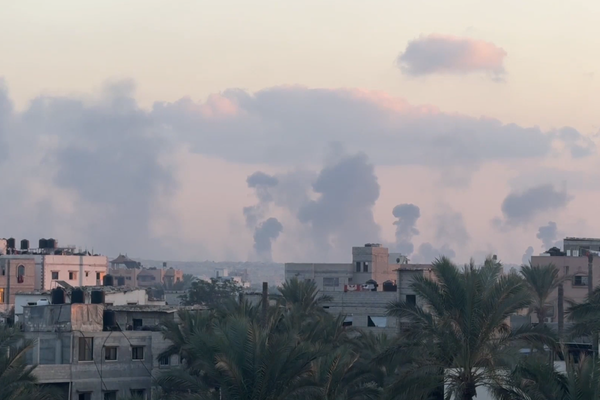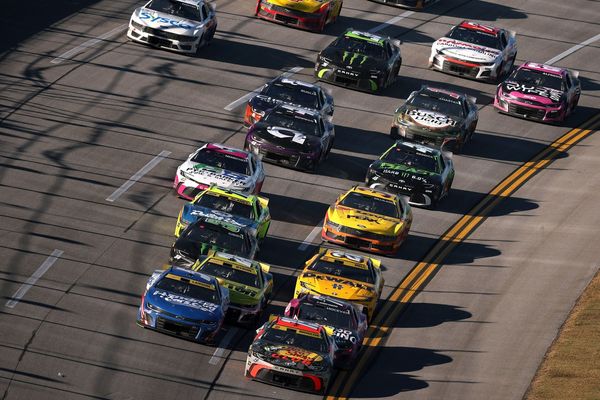
It’s all too easy to take period drama for granted. Flick on the TV, open your laptop, and there you are: transported to a world that is at once foreign and deeply familiar. But how do you go about building a small-screen vision of the past? And what if that past isn’t from centuries ago, but within many viewers’ lifetimes? This spring, a series of dramas is doing just that – bringing the early 80s back to life. According to the people behind them, it’s a process that is at once trickier, less pernickety and a lot more Judith Chalmers-based than you might imagine.
When Neil Forsyth began writing The Gold, the BBC’s excellent dramatisation of the fallout from the 1983 Brink’s-Mat robbery, he turned to the wealth of documentary footage about the crime from the time. Yet he soon found that the key to writing realistic dialogue was not to mimic unnaturally formal appearances on news reports, but to immerse himself in “fly-on-the-wall, street-level documentaries with normal people talking in an unguarded, unfiltered way”. A crucial influence was The Heart of the Angel, a 1989 documentary about the last days of Angel tube station before it was renovated, which features “a lot of real London voices”, says Forsyth. “You spot little bits of language that aren’t widely used now and you leap on them because they feel very real.” (One distinctive period term he came across during his research was “villain”, which is used repeatedly in The Gold to denote a certain type of dyed-in-the-wool criminal, distinct from the financially dodgy Thatcher’s children on the make.)

When it comes to 1980s clothes, TV from the time is only useful to a point. According to Molly Rowe, costume designer on A Town Called Malice – which follows a fictional south London crime family’s relocation to the Costa del Sol in the early 80s – the costumes seen in dramas and sitcoms from the era were too artificially stylised to use as reference points. But shows involving the public were a goldmine – such as early 80s episodes of Judith Chalmers’ seminal travel show Wish You Were Here …?, featuring real holidaymakers sitting beside the presenter on the plane. In Only Fools and Horses, the extras wore their own clothes as they strolled past Del in the market.
These more rough and ready sources clarified something important: the 80s was more old-fashioned than its modern image suggests. Forsyth found that “the popular image of the 1980s – the brash, polished, Stock Aitken Waterman version – was largely an invention in terms of the reality of people’s lives”. Instead, he realised that even the late 80s was firmly mid-century. “If The Heart of the Angel wasn’t dated I would have probably guessed that it was 70s, but it’s on the cusp of the 90s.”
Making the 1980s look like the 1970s was the modus operandi of Anna Sheldrake, production designer of Channel 4 comedy The Curse – another, more impressionistic retelling of the Brink’s-Mat robbery. Sheldrake was determined to capture the “multi-period” nature of working-class London at the time. When designing the home of protagonists and caff owners Albert and Tash, the team “really leaned into those 1970s mustard and brown palettes because the characters couldn’t afford anything more – it was all hand-me-downs”. The team sourced Christmas decorations from the 1950s and furniture from the 1930s that they imagined the characters would have inherited from their relatives. “In the 80s you held on to things for a bit longer – unlike now where you have something new every five minutes.”
Frequently, the 80s setting acted as a window to an even earlier past. Forsyth was inspired by a clip that radio host Danny Baker shared online of “older men being interviewed in the 60s. He said this is the way that everyone used to speak in London and no one does now.” The Curse’s co-creator James De Frond based some of the show’s dialogue on “that kind of wartime cockney that was still used then – not necessarily rhyming slang, just turns of phrase”.
Finding untouched buildings to use as locations was also a challenge. “We visited many cities to look for pockets where time had stood still,” says De Frond. “Glasgow, Birmingham, Manchester, London. Liverpool ended up being our saviour. The old docklands is like you’ve been transported back to the early 80s.” De Frond and Sheldrake scouted locations in the city with their reference bible, a photography book called The East End in Colour, eventually discovering an abandoned caff with its 1970s kitchen still intact. It was just in time – parts of the area are now being demolished to make way for the new Everton stadium. “We were really lucky to find that slice of history before it was taken away.”

Tunnock’s tea cakes are also a helpful slice of 80s history. Their packaging has been unchanged since 1982 – so Sheldrake placed a box in the background of a scene. Period-specific products were an effective way of evoking the time, but their inclusion depended on brand permission. Persil was a yes, but Mattel refused to let the show use the Peaches ‘n Cream Barbies that Sheldrake wanted Albert and Tash’s young daughters to own – “because I’m the same age as them and that’s what I had” – so Sindys were used instead.
Usually, props and costumes are recreated rather than being real examples from the period because items “shouldn’t look vintage, they should look box-fresh,” explains Rowe. Sometimes, however, only the genuine article will do. Rowe was determined to include a yellow Fila jacket in A Town Called Malice, but needed to track down five of the same coat – multiple versions of costumes are needed for things such as blood spatters and stunt doubles – which she sourced from across the globe. “I borrowed one from Neil Primett, who runs 80s Casual Classics, an archive of original stuff, then I found a dealer in France, then one on eBay, then one from another dealer in east London. We spent so much time trawling the internet.”
It isn’t just the interiors and clothes that need to be true to the era – you need 80s air too. That meant smoking, and lots of it. Pretty much everyone in The Gold is consistently fag-in-hand. “It was only when I was watching the edit that I was like, Jesus, they’ve gone for it!” laughs Forsyth, while acknowledging it wasn’t too much of a departure from reality. “I grew up in Dundee and you left the house and came back stinking of smoke, that feels quite evocative to me.”
As Peter Hoar, director of Nolly – Russell T Davies’s series about the final years of Crossroads star Noele Gordon, who died in 1985 – explains, smoking isn’t just realistic, the hazy effect it produced is visually very important when it comes to evoking the past. “One thing we like to do in television is give areas atmosphere – smoke gives the air a texture and it looks pretty on camera.” Gordon and her best friend, the actor Tony Adams, were heavy smokers, which was a plus. “When there’s no source for that smoke it could look really false, so we were pleased we could genuinely do it.”

Even the most well-researched scripts sometimes get things wrong, however. Forsyth recalls a couple of instances of older crew members “sidling up to me after a rehearsal or a read-through or – alarmingly – the first take and going: ‘I’m not sure they’d say it quite like that.’” And some things did slip through the net. “I’ve had more than one message suggesting people in the 1980s didn’t widely use the word ‘tsunami’. There’s a scene when [gold dealer] John Palmer talks about a tsunami and I had people very sternly telling me that actually in 1984 you would have used the phrase ‘tidal wave’.”
Other anachronisms were more deliberate. During the making of Nolly, Hoar was keen that the team “didn’t cut our noses off to spite our face in terms of authenticity”. When recreating the famously shonky-looking Crossroads set they decided to copy the green 70s sitting room rather than the “dirty brown” 80s version because it was easier on the eye. Similarly, the show’s lighting director was “never going to light it as badly as they did” on the actual soap, instead opting for a style that would be more flattering for the actors. And though they filmed the TV scenes on real 80s cameras to get the right visual quality, they were “three or four years too new”, because the older ones they had tracked down stopped working.
The Gold, meanwhile, features a dinner party soundtracked by Depeche Mode’s 1987 single Never Let Me Down Again. “I’ve had various people online saying this party takes place in 1985. I said: ‘Well, she might have got an early demo, or maybe it was just a really long party,’” says Forsyth. “It’s not a docu-drama – you have to be relaxed sometimes with minor details. You also have the creative responsibility to make something land in the most powerful way possible.” Still, the ideal scenario was when the two concerns aligned. Forsyth is delighted that The Gold didn’t end up “80s in inverted commas. This is the thought-out, researched 1980s. The real 1980s.”







